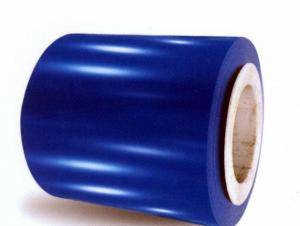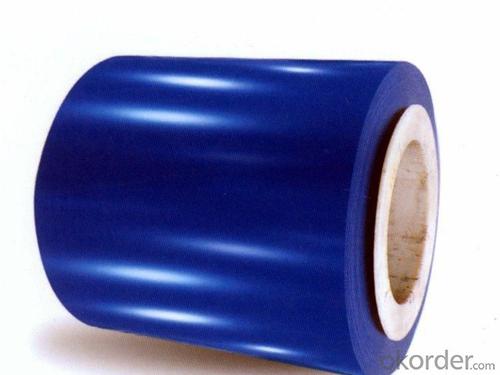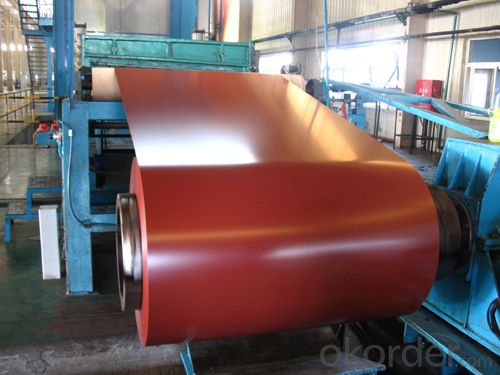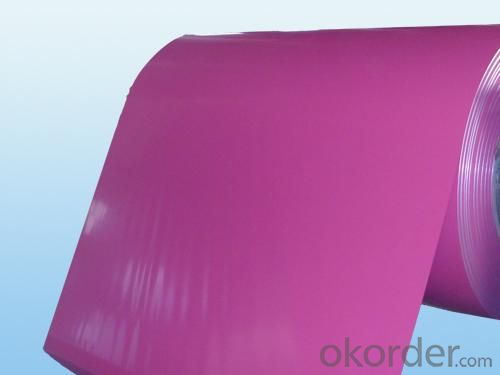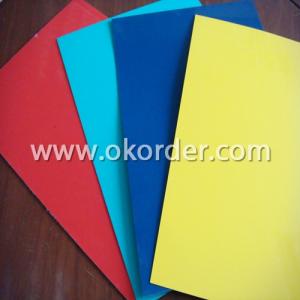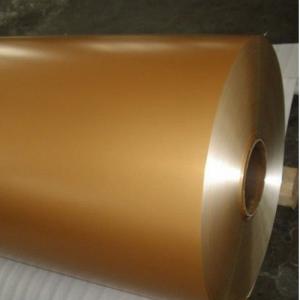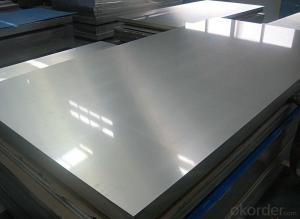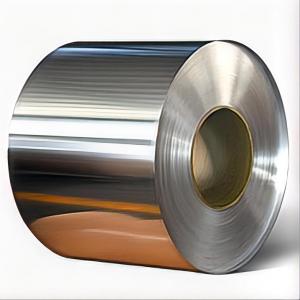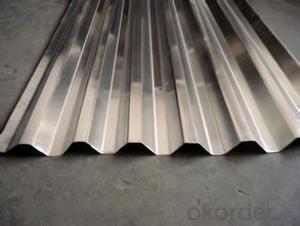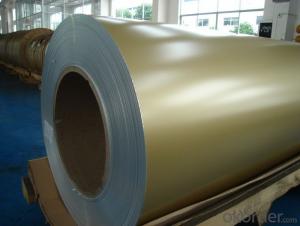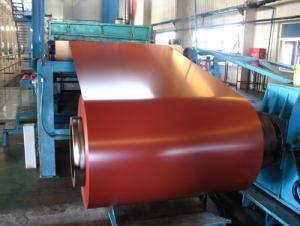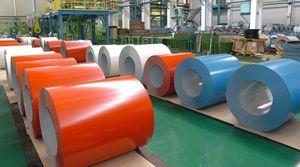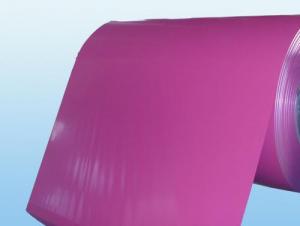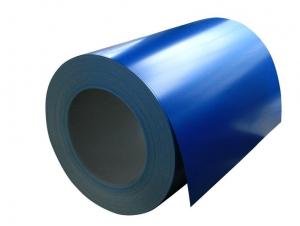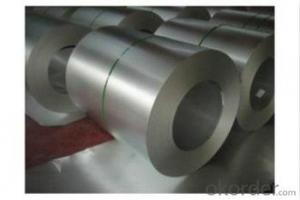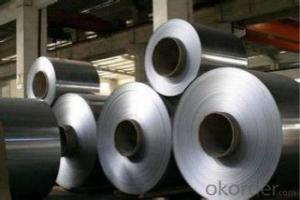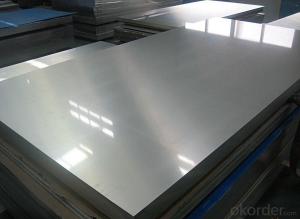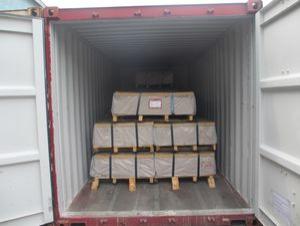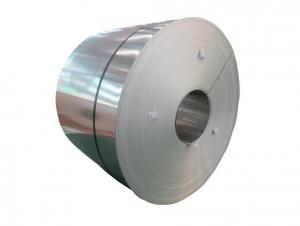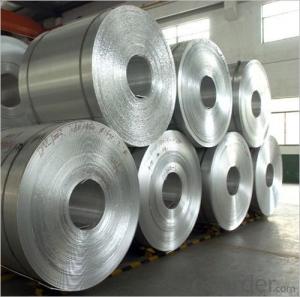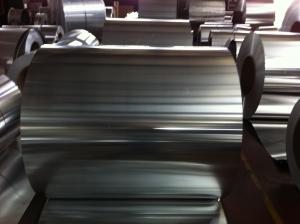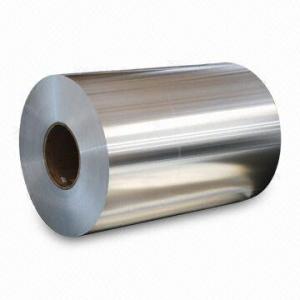Quality Aluminum Coil - PVDF Color Coated Aluminium Coil AA3003 Temper H14
- Loading Port:
- China Main Port
- Payment Terms:
- TT or LC
- Min Order Qty:
- -
- Supply Capability:
- -
OKorder Service Pledge
OKorder Financial Service
You Might Also Like
1.Structure of Product Description
PVDF Color Coated aluminium coils are widly used in decoration in the open air. The painting can last about 15-20 years. Now many Asian countries are choosing this product instead of steel products. For the painting brand, we can provide China brand, North American PPGI and European brand Becker. Usually our customers from European prefer Becker.
2. Main features of the product
a.Competitive price--CNBM have own mills, so we can provide more competitive price than those small suppliers.
b.Professional after-sale service--We have more than 20 years exportation experience, you can get most professional service from CNBM.
c.Fast delivery time--Usually our delivery time is about 30 days.
3. Image
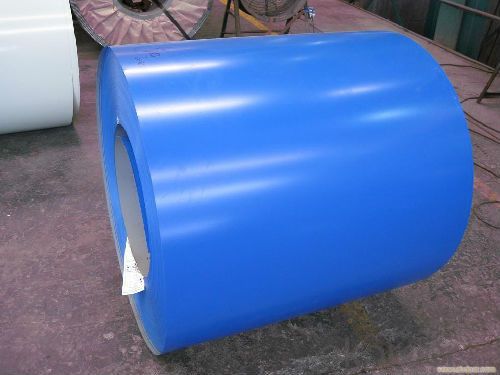
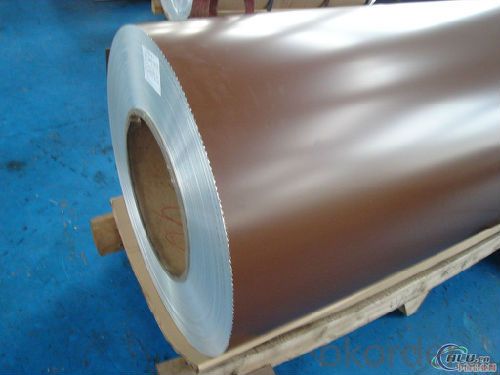
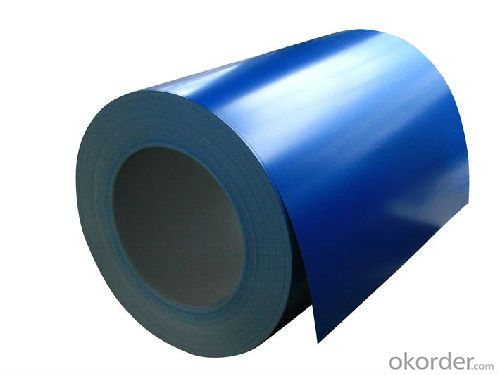
4.Product Specification
| Alloy | Temper | Painting | Coil ID | Coil Weight | Last Time |
| AA3003 | H14 | PVDF | 505MM | Max 2.65 tons | 15-20 years |
5.FAQ:
What is the quality standard?
---Usually our standard is GB3880-2006
What is the largest width?
---It is 2300mm
What is your MOQ for this product?
---Usually we can do 5 tons for every size.
- Q: What is the minimum thickness available for aluminum coils?
- The minimum thickness available for aluminum coils can vary depending on the specific requirements of the application. However, in general, aluminum coils can be manufactured with a minimum thickness of around 0.006 inches or 0.15 millimeters. It is important to note that certain industries or uses may have different minimum thickness requirements, so it is always advisable to consult with a manufacturer or supplier to determine the appropriate thickness for a specific application.
- Q: What are the common surface treatments for aluminum coils in the automotive industry?
- Aluminum coils in the automotive industry undergo various surface treatments to improve their performance and appearance. Some popular treatments include anodizing, painting, cladding, clear coating, and polishing/buffing. Anodizing is a widely used treatment that forms a protective oxide layer on the surface of the coils. This is achieved by immersing the coils in an electrolytic solution and applying an electric current. Anodizing enhances corrosion resistance, durability, and allows for dye or paint application. Painting is another option for aluminum coil treatment, providing both aesthetics and protection against environmental factors. Coils are coated with either solvent-based or powder paint, offering an appealing appearance and safeguarding against scratches and UV radiation. Cladding involves bonding a layer of aluminum alloy with different properties onto the coil's surface. This treatment is commonly employed to enhance strength, thermal conductivity, or corrosion resistance. Cladding methods can include hot rolling, cold rolling, or explosive bonding. Clear coating is often applied to aluminum coils to create a transparent protective layer. This coating prevents corrosion, oxidation, and discoloration, while preserving the natural metallic appearance. Polishing and buffing are surface treatments that aim to improve the smoothness and shine of aluminum coils. Imperfections, scratches, and oxidation are mechanically removed through grinding or polishing. These methods are often used for decorative purposes in high-end automotive applications. These are merely a few examples of the surface treatments available for aluminum coils in the automotive industry. The choice of treatment depends on factors such as desired appearance, performance requirements, and environmental conditions the coils will face.
- Q: Can aluminum coils be used in automotive heat exchangers?
- Yes, aluminum coils can be used in automotive heat exchangers. Aluminum is a popular choice for heat exchangers in the automotive industry due to its excellent thermal conductivity, lightweight nature, and resistance to corrosion. These properties allow aluminum coils to efficiently transfer heat from one fluid or gas to another, making them ideal for use in automotive heat exchangers. Additionally, aluminum coils are also easy to manufacture and can be formed into various shapes and sizes, further enhancing their suitability for automotive applications.
- Q: Can aluminum coils be used for food storage and processing?
- Food storage and processing can indeed utilize aluminum coils. The multitude of advantageous properties that aluminum possesses is what makes it a popular choice in this field. Its lightweight nature, strength, and resistance to corrosion create an ideal environment for maintaining the quality and freshness of food. Aluminum coils are versatile and can be used to manufacture a wide range of equipment like containers, pans, trays, and foil for food storage and processing. Additionally, the excellent thermal conductivity of aluminum enables efficient cooling and heating of food. Its impermeability to light, moisture, and oxygen is also beneficial in preventing spoilage and contamination. In conclusion, aluminum coils offer a reliable and secure option for food storage and processing needs.
- Q: What are the maximum operating temperatures for aluminum coils?
- The maximum operating temperatures for aluminum coils typically depend on the specific alloy used and the application they are being used in. However, in general, aluminum coils can withstand high temperatures without significant degradation or performance issues. For most common aluminum alloys, such as 3003 and 5052, the maximum operating temperature is around 300-400 degrees Fahrenheit (150-200 degrees Celsius). These temperatures are well within the range of most industrial and commercial applications, including HVAC systems, refrigeration units, and heat exchangers. There are also specialized aluminum alloys, such as 4004 and 4343, that are designed specifically for high-temperature applications. These alloys can withstand temperatures up to 550-650 degrees Fahrenheit (290-340 degrees Celsius) without significant loss of structural integrity or performance. It's worth noting that the maximum operating temperature may vary depending on factors such as the thickness of the coil, the heat transfer conditions, and the duration of exposure to high temperatures. Therefore, it is always advisable to consult the specific manufacturer's guidelines or conduct temperature tests to determine the safe operating limits for a particular aluminum coil in a specific application.
- Q: What are the different types of surface treatments for corrosion resistance?
- There are several different types of surface treatments that can be used to enhance corrosion resistance in various materials. These treatments can be categorized into mechanical, chemical, and electrochemical methods. 1. Mechanical surface treatments: These methods involve physically altering or modifying the surface of the material to improve corrosion resistance. Some common mechanical treatments include shot peening, sandblasting, and polishing. Shot peening involves bombarding the material with small metal pellets to induce compressive stresses, which helps to prevent corrosion. Sandblasting is a process of blasting the surface with abrasive particles to remove any existing corrosion and create a clean, smooth surface. Polishing involves the use of abrasives to create a smooth and reflective surface, which reduces the likelihood of corrosion initiation. 2. Chemical surface treatments: Chemical methods involve applying a chemical solution or coating to the material's surface to create a protective layer against corrosion. One commonly used chemical treatment is chromating, which involves the application of a chromate conversion coating. This coating provides a barrier against corrosion and also improves the adhesion of subsequent paint or coating layers. Another chemical treatment is anodizing, commonly used for aluminum surfaces. Anodizing creates a thick oxide layer on the surface, which enhances corrosion resistance and can also provide decorative finishes. Other chemical treatments include phosphating, passivation, and galvanizing, which involve the application of specific chemical solutions or coatings to protect against corrosion. 3. Electrochemical surface treatments: Electrochemical methods utilize the principles of electrochemistry to create a protective layer on the material's surface. One such method is electroplating, which involves the deposition of a thin layer of a more corrosion-resistant material onto the surface of the base material. This can be done using various metals, such as zinc, nickel, or chromium. Another electrochemical treatment is anodic protection, where a sacrificial anode is connected to the material, causing the anode to corrode instead of the material. This process is commonly used for pipelines and underground structures. Overall, the choice of surface treatment for corrosion resistance depends on the material, the intended application, and the desired level of protection. Each treatment method has its advantages and limitations, and it is important to consider factors such as cost, environmental impact, and performance requirements when selecting the appropriate treatment.
- Q: Is it possible to use aluminum coil as a material for crafting jewelry?
- <p>Yes, you can use aluminum coil to make jewelry. Aluminum is lightweight, affordable, and easy to work with, making it a popular choice for crafting. It's also hypoallergenic, which is a plus for those with metal sensitivities. However, it's softer than metals like sterling silver or gold, so it may require more care to prevent denting or bending. Aluminum can be shaped, cut, and polished to create various jewelry designs, but it may not hold up as well over time or under heavy use compared to harder metals.</p>
- Q: What are the different surface protection options available for aluminum coils?
- Depending on the specific requirements and applications, there are several options available for surface protection on aluminum coils. 1. Applying a paint coating is a common method of surface protection. This creates a protective layer that helps prevent corrosion, oxidation, and damage from environmental factors. Paint coatings also provide aesthetic appeal and come in various colors and finishes. 2. Anodizing is an electrochemical process that creates a durable and corrosion-resistant oxide layer on the aluminum coil's surface. This method enhances the coil's resistance to wear and tear and provides a decorative appearance. Anodized coatings can be clear or colored, offering design flexibility. 3. Another option is applying a protective film made of plastic or vinyl on the surface of the aluminum coil. This film provides temporary protection during transportation, handling, and installation, guarding against scratches and abrasions before being removed. 4. Powder coating involves the electrostatic application of a dry powder onto the aluminum coil's surface. The powder is then cured under heat, resulting in a durable and resilient protective layer. Powder coatings are known for their excellent resistance to chemicals, UV rays, and physical impacts. 5. Cladding, or laminating, involves bonding a protective layer, such as PVC, onto the aluminum coil's surface. This method enhances resistance against scratches, impact, and weathering. Cladding can also provide additional benefits like thermal insulation and noise reduction. When selecting the most suitable surface protection option for aluminum coils, it is important to consider factors such as the intended use, environmental conditions, desired aesthetics, cost, durability, and application requirements.
- Q: I bought a house that is older with aluminum windows, and the last owner did not seem to clean them for quite some time. The aluminum frames are a silvery milky white color and my neighbors that have the same windows look like chrome. I have brushed these windows with scrub brushes and green scouring pads even aluminum wheel cleaner, now my frame is a clean milky grey color, it just isnt polished like my neighbor has it, his is like chrome. I have tried silver polishes and this doesn't remove the grey film either - i need something stronger. Can anyone help???
- Use chrome polish, it worked for my aluminum, um, toys....
- Q: i know that your not suppose to use DC for aluminum only with AC but is it possible?
- be careful scrambling aluminum molecules...it gets brittle in a hurry...do it wrong and you're gonna mess up a lot of stuff.
Send your message to us
Quality Aluminum Coil - PVDF Color Coated Aluminium Coil AA3003 Temper H14
- Loading Port:
- China Main Port
- Payment Terms:
- TT or LC
- Min Order Qty:
- -
- Supply Capability:
- -
OKorder Service Pledge
OKorder Financial Service
Similar products
Hot products
Hot Searches
Related keywords
